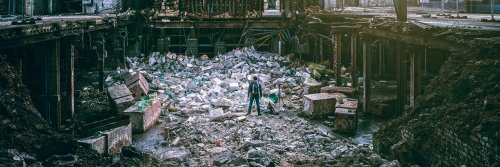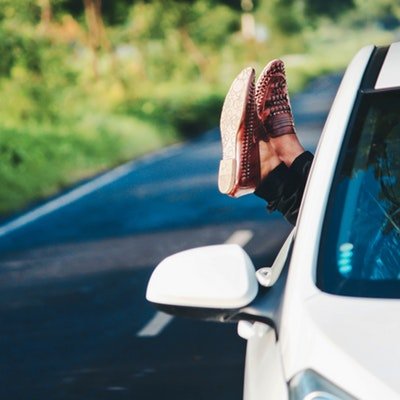Natural disasters can and do occur at the most unexpected times around the globe. For tourists caught up in a catastrophe, it can be a daunting experience with life-threatening consequences, even more so if you don't speak the local lingo. A tourist is often more vulnerable than the locals, who may have some experience with regional tragedies. Volcanoes erupt, heavy rains bring flooding, tsunamis devastate whole towns, earthquakes shake the surroundings, and tidal waves may follow.
An earthquake is Mother Nature reshaping her territory; it will rock your world if you are caught up in one. Once the earth's growing pains have subsided, the shock value can sometimes morph into landslides and tsunamis. One of the most formidable forces to experience, it's essential to learn the warning signs similar to an upset stomach—grumbles, rumbles, and shaking; not in your guts, but in your surroundings.
Basically, three zones are prone to earthquakes: the circum-Pacific seismic belt along the rim of the Pacific Ocean nicknamed the 'Ring of Fire,' the Alpide earthquake belt going from Java to Sumatra cutting through the Himalayas, the Mediterranean and into the Atlantic Ocean, and the mid-Atlantic Ridge in the deep blue away from humans except for Iceland that is perched directly on top of it. Most earthquakes happen in Japan, Indonesia, China, the Philippines, Iran, Turkey, and Peru. The United States is earthquake-prone because of its geological landscape on major fault lines: the San Andreas Fault and the New Madrid Fault.
Before leaving home, research the earthquake warning apps available for your destination and download the best one. If you are traveling with children to an earthquake-prone area, have a conversation as a family to explain what an earthquake is and what would happen if an earthquake occurred. Formulate a family emergency plan, such as where to meet and how to get there if separated. If your home country has an embassy where you are, this is a good option for a rendevous point. Highlight that it's only a 'just in case' scenario and their safety is the priority.

When the earth under your feet is rocked by an earthquake, where you are will determine your reaction when survival mode kicks in:
Outside – drop to the ground on your hands and knees while covering your head and neck with your arms. Ensure you are away from power lines, trees, multi-story buildings, and street lights. If you are in a motor vehicle, always stop. Avoid overpasses, bridges and electricity lines. Please fasten your seat belt (you should have it on anyway) and stay in the car. If, by some misfortune, a power line falls onto your vehicle, do not attempt to get out. Remain until help arrives. Be on alert for landslides and falling rocks if you are in the countryside near mountains or cliffs.
Inside – same initial reaction as if you are outside, except you may have the advantage of getting under a nearby heavy table or desk. The safest place in a building or hotel is an interior room with no windows, such as a bathroom. Do not move around, and stay away from windows in case the glass breaks. Hold on to a stable object if possible, and steer clear of doors and doorways. If you are in a lift when an earthquake occurs, get out as quickly as possible—hit every floor button if needed.
After an earthquake, always check yourself first for injuries before helping others. The quake may have triggered sprinkler systems and fire alarms to go off. If by the coast, an earthquake may set a tsunami in motion, so run to higher ground immediately.
If inside a building, fire can be the most common hazard caused by broken gas pipes. If you can't shut it off, quickly evacuate, avoiding any fallen power lines. Hopefully, you will have on a sturdy pair of shoes so glass shards won't cut your feet. Do not use a lift; always use the stairs. Do not enter a damaged building, and do not move too soon as debris may still be flying around, or there may be aftershocks.
If trapped under the wreckage, cover your mouth immediately so dust doesn't get into your lungs. Stay as still as possible to avoid dislodging the fallen debris around you. Make a noise by tapping on a pipe or whatever is handy to let first responders know where you are. If you still have your mobile, text your location to an emergency contact. Don't light a match or any open flame for light, as it could ignite a fire if a broken gas pipe is near you.
Important notes:
- Always carry identification when traveling—a passport (or a copy) is always the best document to have on you.
- Alert family and friends via text that you are safe.
- Keep abreast of official warnings for evacuation. If this isn’t possible, trust your instincts.
- Download a phone tracker onto your mobile, or for children, ensure they carry a personal GPS tracker such as a lightweight Samsung 'SmartThings Tracker.'
- Always take out travel insurance.
This article is not aimed to scare but to educate—a quick read may give you the information to save yourself and maybe others.
Gail Palethorpe, a self proclaimed Australian gypsy, is a freelance writer, photographer and eternal traveller. Check out her website Gail Palethorpe Photography and her Shutterstock profile.















